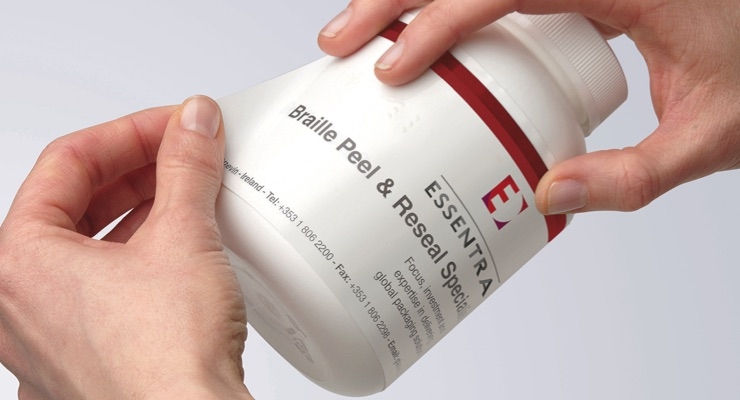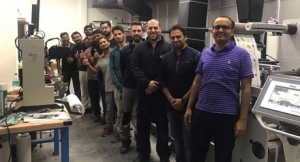Steve Katz, Editor04.27.17
Data released by the United States Food and Drug Administration (US FDA) states that approximately 10% of all pharmaceuticals currently on the market are counterfeit. While this translates to an estimated 1% penetration rate in developed countries in Europe and North America, this number can reach up to 30% in countries in Africa and the Far East. These figures are continuing to grow, particularly due to increasingly complex supply chains, the expansion of eCommerce, a lack of enforcement capacity and the increased sophistication of counterfeiters.
To address this threat, a number of anti-counterfeiting measures have been identified by pharmaceutical companies and governments alike, and are now being implemented around the world. For example, the US FDA has outlined numerous characteristics of security features on packaging for medicinal products for human use. These characteristics help to address the ever-growing threat of illicit medicines.
"To comply with mandatory guidelines, various anti-counterfeiting efforts have been developed by pharmaceutical and packaging companies around the world," says Rupert Taylor, global category manager for healthcare and personal care at Essentra, a global provider of specialist packaging and authentication solutions. "Essentra recommends introducing a range of tamper verification labels to the packaging portfolio for additional security. These labels help to show whether the packaging has been opened or altered since the product was packed and shipped from the manufacturer, allowing consumers to confirm that the contents inside the packaging are authentic."
There are three types of labels that Essentra recommends as a part of an expanded portfolio:
Taylor explains, "Fibre tear labels provide a very clear visual indicator that the pack has been opened, as they irreversibly damage both the print and carton board to which the labels are affixed. When the labels are removed, a ripped appearance remains, even on varnished coatings.
"Similarly, void release labels provide a clear visual cue which is more aesthetically pleasing than the former, leaving behind a void message or specifically designed pattern on the carton. On a more sophisticated level, frangible film labels use a specially engineered substrate that disintegrates the label when consumers attempt to remove it from the carton board," Taylor says.
These labels from Essentra are all overt technologies, enabling instant authentication through visual inspection. They provide the end user with confidence, by enabling them to judge if the products that they are opening are genuine and originate from the legitimate manufacturer.
To apply another layer of security, covert or forensic technologies can be added to the labels. "Covert technologies are difficult to detect without specialist equipment, while forensic technologies can only be identified using laboratory equipment. An example technology that bridges covert and forensic layers of authentication is Essentra’s Patron taggant system. The system uses a transparent taggant ink that is chemically engineered to provide consumers with a unique signature. This signature is only readable with bespoke Patron taggant readers throughout the supply chain, ensuring the authenticity of the product," says Taylor.
He concludes, "It is imperative that companies can deal with the threat posed by counterfeiters to protect brand identity, guarantee consumers receive genuine products, and comply with new legislation. Through introducing an expanded packaging portfolio, as well as a multi-layered security approach, pharmaceutical manufacturers are better prepared to meet such anti-tampering requirements."
For more on Essentra's expanded ant-counterfeiting portfolio, check out the L&NW slideshow.
To address this threat, a number of anti-counterfeiting measures have been identified by pharmaceutical companies and governments alike, and are now being implemented around the world. For example, the US FDA has outlined numerous characteristics of security features on packaging for medicinal products for human use. These characteristics help to address the ever-growing threat of illicit medicines.
"To comply with mandatory guidelines, various anti-counterfeiting efforts have been developed by pharmaceutical and packaging companies around the world," says Rupert Taylor, global category manager for healthcare and personal care at Essentra, a global provider of specialist packaging and authentication solutions. "Essentra recommends introducing a range of tamper verification labels to the packaging portfolio for additional security. These labels help to show whether the packaging has been opened or altered since the product was packed and shipped from the manufacturer, allowing consumers to confirm that the contents inside the packaging are authentic."
There are three types of labels that Essentra recommends as a part of an expanded portfolio:
- Fibre tear labels
- Void release labels
- Frangible film labels
Taylor explains, "Fibre tear labels provide a very clear visual indicator that the pack has been opened, as they irreversibly damage both the print and carton board to which the labels are affixed. When the labels are removed, a ripped appearance remains, even on varnished coatings.
"Similarly, void release labels provide a clear visual cue which is more aesthetically pleasing than the former, leaving behind a void message or specifically designed pattern on the carton. On a more sophisticated level, frangible film labels use a specially engineered substrate that disintegrates the label when consumers attempt to remove it from the carton board," Taylor says.
These labels from Essentra are all overt technologies, enabling instant authentication through visual inspection. They provide the end user with confidence, by enabling them to judge if the products that they are opening are genuine and originate from the legitimate manufacturer.
To apply another layer of security, covert or forensic technologies can be added to the labels. "Covert technologies are difficult to detect without specialist equipment, while forensic technologies can only be identified using laboratory equipment. An example technology that bridges covert and forensic layers of authentication is Essentra’s Patron taggant system. The system uses a transparent taggant ink that is chemically engineered to provide consumers with a unique signature. This signature is only readable with bespoke Patron taggant readers throughout the supply chain, ensuring the authenticity of the product," says Taylor.
He concludes, "It is imperative that companies can deal with the threat posed by counterfeiters to protect brand identity, guarantee consumers receive genuine products, and comply with new legislation. Through introducing an expanded packaging portfolio, as well as a multi-layered security approach, pharmaceutical manufacturers are better prepared to meet such anti-tampering requirements."
For more on Essentra's expanded ant-counterfeiting portfolio, check out the L&NW slideshow.





















